If you are a city dweller, your exposure to wildlife is limited to watching documentaries on Netflix, YouTube, Discovery, National Geographic, Animal Planet, etc.
Watching animals on screen is vastly different from experiencing them in the wild. The thrill of spotting animals, listening to the melody of different sounds, and taking a ride through a canopy of trees is exhilarating.
While India is known for its stunning architectural marvels, its incredibly diverse geography offers exquisite natural landscapes, including mountains, deserts, seacoasts, delta regions, islands, and forests.
The forests in India are also diverse, ranging from the evergreen rainforests of the Western Ghats to the deciduous forests of central India and the alpine forests of the Himalayas.
These forests provide a natural home to many animals, including the Bengal tiger, Asian elephant, one-horned rhinoceros, and the Asiatic lion.
How can you explore these forests? Most of the national parks in India offer wildlife viewing and birdwatching opportunities, through jeep safaris, elephant safaris, and guided walks.
Here we have listed some popular Jungle Safaris in India, that you should not miss to spot wildlife and experience nature.
Jim Corbett National Park
- State: Uttarakhand
Established in 1936, Jim Corbett is India’s first national park renowned for its tiger population. Located in the Himalayas, the park is spread over 1318 square kilometers, visitors can also see elephants, leopards, and various bird species.
Jim Corbett National Park is about 245 kilometers from Delhi and 180 kilometers from the state capital, Dehradun.
We have briefly explained this in another article if you are wondering why the park is named after Jim Corbett.
The best time to visit is from November to June.
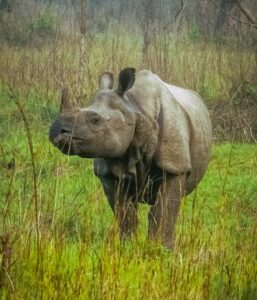
Kaziranga National Park
- State: Assam
A UNESCO World Heritage Site, Kaziranga National Park is famous for its one-horned rhinoceros and offers a mix of grassland and riverine ecosystems.
The national park covers an area of approximately 430 square kilometers.
The marshy areas created due to the Brahmaputra River in the north of the park, provide a conducive environment for rich flora and fauna. While the region is famous for the one-horned rhinoceros, the park is also home to Asian elephants, wild water buffalo, and Royal Bengal tigers.
The Kaziranga National Park is approximately 200 kilometers from the state capital, Guwahati, and attracts several wildlife enthusiasts and nature lovers.
The best time to visit is from November to April.
Sunderbans National Park
- State: West Bengal
A UNESCO World Heritage Site, the Sundarbans is the largest mangrove forest in the world and is famous for its unique ecosystem, including the elusive Bengal tiger and saltwater crocodiles.
The mangrove forest is situated where the Rivers Ganga and Brahmaputra empties into the Bay of Bengal Sea, making this the world’s largest delta. Apart from the famous tiger, the marshy terrain is adobe to reptiles like the Monitor Lizard and the Olive Ridley Turtle.
Unlike other jungle safaris in India, to explore the Sunderbans you will need to get on a boat, which will take you across more than 50 islands.
The national park got its name from one of the mangrove plants known as Sundari (Heritiera Minor).
Sunderban National Park is located approximately 160 kilometers from the state capital, Kolkata.
The best time to visit is from December to February.
Do you understand the importance of Mangroves in our lives? Read here.
Tadoba Andhari Tiger Reserve
- State: Maharashtra
Tadoba is known for its diverse wildlife, including Tigers, Indian leopards, Sloth bears, Nilgai, Striped Hyena, Small Indian Civet, Marsh Crocodile, Indian Python, and many reptiles.
The total area of the tiger reserve is 1,727 square kilometers and the hilly landscape provides a dense forest area, smooth meadows, and, deep valleys. There are two lakes and one Tadoba River in the park.
Tadoba Reserve lies approximately 150 km from Nagpur city.
The best time to visit is from November to April.
Kanha National Park
- State: Madhya Pradesh
Kanha National Park is known for its Sal and bamboo trees, which provide home to a significant population of tigers and the barasingha (swamp deer). The park also has leopard, bison, gaur, and deer species which include spotted deer, sambar, barking deer, etc.
The national park is about 160 kilometers from Jabalpur.
The ideal time to visit the forest is from October to February.
Pench National Park
- State: Madhya Pradesh
At about 187 kilometers from Kanha National Park, there is another nature reserve, Pench National Park, which inspired Rudyard Kipling’s “The Jungle Book”.
Pench National Park covers a total area of 1,000 sq. km, where three-fourths lies in Madhya Pradesh and one-fourth in neighboring Maharashtra.
The national park is named after the river Pench which flows almost in the the middle of the park. The deciduous forests provide habitat to Bengal Tigers, Chital, Jungle Cat, Wolf, Indian Leopard, Gaur, Four-horned Antelope, and various species of Birds.
The ideal time to visit the forest is from October to February.
Ranthambore National Park
- State: Rajasthan
Famous for its Bengal tigers, Ranthambore National Park is one of the popular jungle safari destinations in India. The park is located at the junction of the Aravali and Vindhya hill ranges and covers an area of approximately 500 sq km.
Other than the Royal Bengal Tigers, the national park has animals like leopards, sloth bears, several deer species like chital (spotted deer), marsh crocodile, palm civet, jackal, desert fox, and many reptile and bird species.
Ranthambore National Park is located about 130 km from Jaipur and has many types of flora which include shrubs, grass, and trees like dhok trees, palm trees, dhak, and banyan trees.
The best time to visit is from October to June, with peak tiger sightings from March to May.
Bandhavgarh National Park
- State: Madhya Pradesh
Bandhavgarh National Park has one of the highest densities of tigers in India and is renowned for its Royal Bengal tiger sightings. Interestingly, it is also a famous natural hub for White Tigers.
The park is also home to Elephants, Indian Wild Boars, Sloth Bears, Sambar Deer, Nilgai, Jackals, foxes, and a range of avian species, including vultures and eagles.
Bandhavgarh National Park is spread over 100 sq km and has a buffer area of approximately 400 sq km. The Vindhya hills provide terrain for deciduous and tropical forests, where trees like sal, teak, and bamboo are present.
Bandhavgarh forest provides one of the few jungle safaris in India where along with the wildlife you can also explore a remnant of a historical structure, including a fort, temple, and an ancient statue.
Located 250 kilometers from Khajuraho, the region provides many forests, natural landscapes, and cultural diversity. You can read more here.
The best time to visit the park is from November to March.
Sasan-Gir National Park
- State: Gujarat
Gir National Park is the only natural habitat outside Africa where a lion can be seen.
Apart from the Asiatic Lion, other animals that can be seen are Chowsingha – the world’s only four-horned antelope, striped Hyena, Jackal, Indian Fox, pygmy woodpecker, brown fish owl, black buck, etc.
Gir National Park covers 1412 square kilometers and is about 410 kilometers from the State capital, Ahmedabad, or 160 kilometers from Rajkot.
The best time to visit is from December to March.
Wrapping Up
The forests and jungles provide a thrilling way to connect with nature and observe wildlife in their natural habitats. There are numerous natural parks in India, each offering unique experiences and diverse ecosystems.
However, it must be noted that spotting animals like tigers, lions, and elephants in a jungle should not be the sole motive.
While spotting exquisite animals like a big cat on jungle safaris in India is gratifying, experiencing the sounds of insects, chirps of birds and the hush of leaves is meditative.
Things to Note
– Before embarking on an adventurous Jungle safari in India, consider checking the timings of the parks, as many nature reserves remain closed in specific months and specific days of the week.
– To visit the national park in India, you might need a registration or a permit from the Forest Department. So make your bookings in advance.
– Wear appropriate clothing based on the weather like a sun cap, and good shoes, and if possible carry a pair of binoculars for a memorable experience.
– Read about the specific type of flora and fauna that you will find in the forests like types of trees, plants, birds, and other small animals, this will greatly enhance your experience.
– On the Jungle safari, respect the wildlife, maintain a safe distance from animals, do not talk loudly, feed animals or birds, play music, use a camera flash, and make unnecessary gestures.
– Carry a trash bag with you and keep the Jungles clean, by not littering and throwing plastic waste.
– Listen to forest guides and the local authorities.
– Wear a smile and respect the beauty of Mother Nature.
Additional Readings
About Elephants. Read here.
Natural UNESCO World Heritage Sites in India. Read here.
Challenges in Wildlife Conservation. Read here.

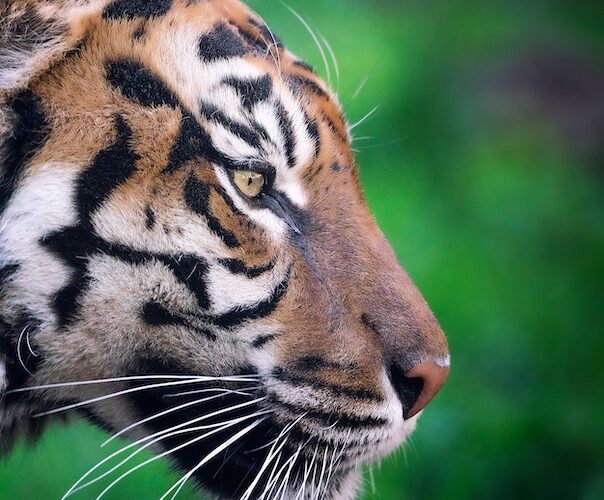
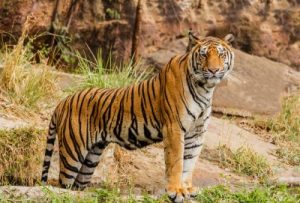
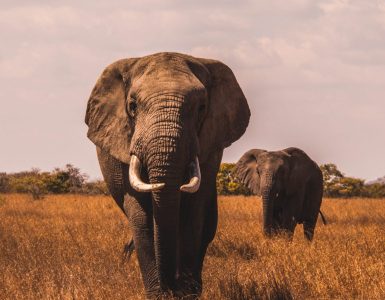

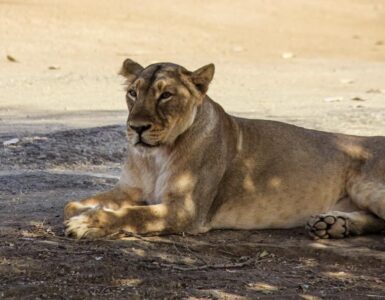

Add comment